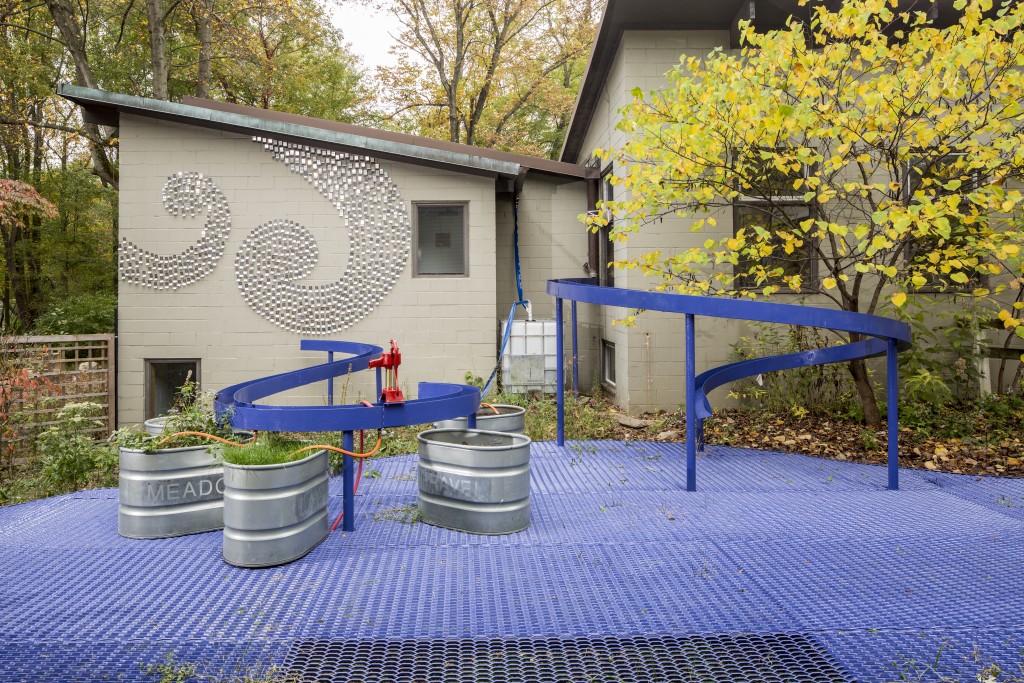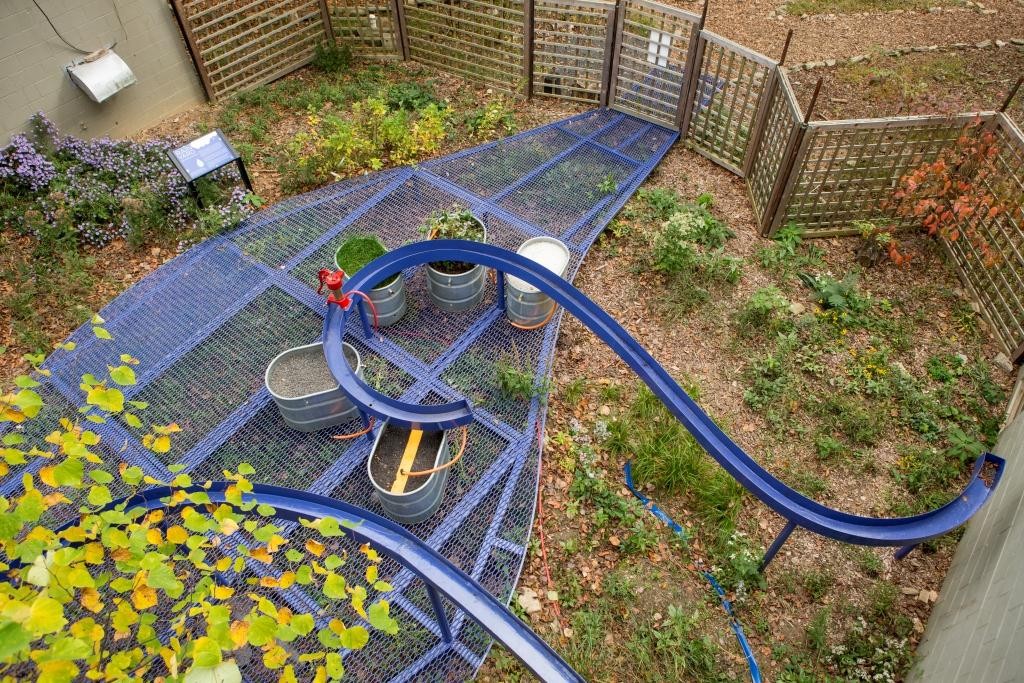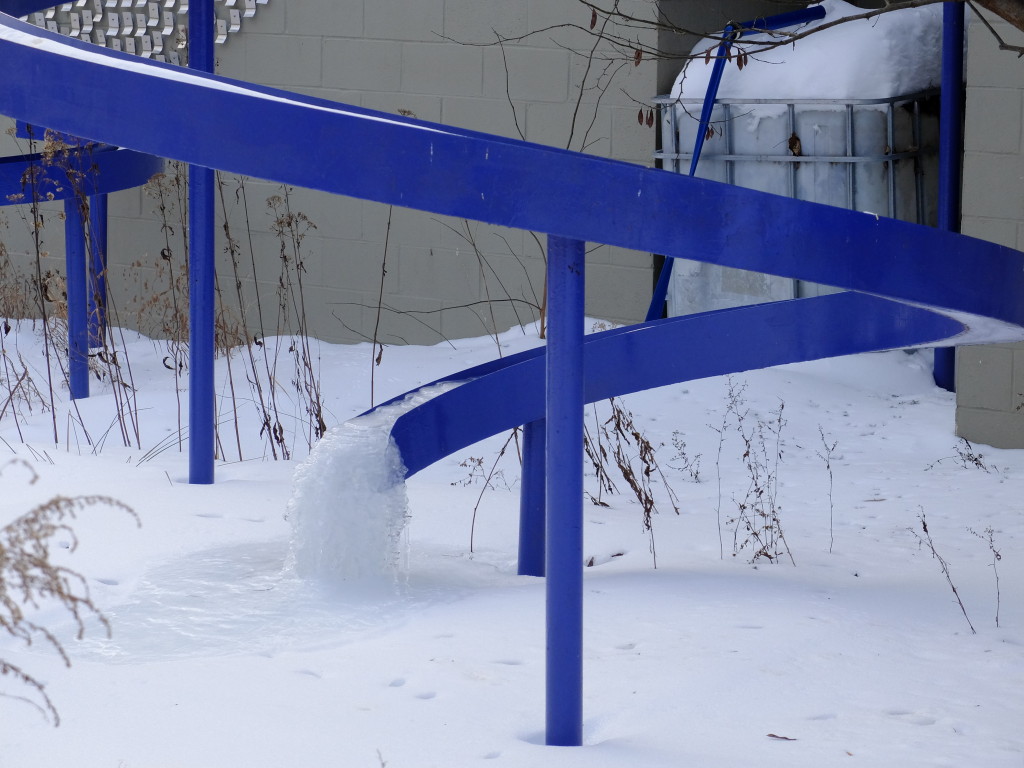By Christina Catanese, Director of Environmental Art and Liz Jelsomine, Exhibitions Coordinator
Editor’s note: The Schuylkill Center produced a wall calendar for 2017 in celebration of the environmental art program. Throughout the year, we’ll run a monthly post on our blog highlighting the art works featured in that month of the calendar.
Rain Yard is an interactive artwork by Stacy Levy that has been on display in the Schuylkill Center’s Sensory Garden since October 2013. Rain Yard provides a function of mitigating stormwater runoff from our building, while highlighting the critical role soil and plants play in the water cycle. Its open steel platform allows rain to filter down, plants to grow up, and people to hover somewhere in between.
Levy collaborated with ecologists, engineers, designers, educators, and horticulturists to create this artwork. It was the art program’s first major foray into the intersection of art, restoration, and education—art that works with and for nature, and invites audiences to be engage with it more actively.
Rain Yard is a beautiful installation year-round and for the past four years, has been a treasured way to educate visitors of all ages about the water cycle and the world around them. With its vibrant blue color, and its central location just out the back door of the Visitor Center, it’s hard to miss. Our staff interacts with it almost daily, even if just to pass through on our way to the trails.
In honor of the beloved installation, we asked some staff members to reflect on their favorite things about Rain Yard and what it has meant to them over the years.
“As an educator of young children, my favorite part about the Rain Yard is the many opportunities it provides for experiential learning. On rainy days, I love seeing the children’s excitement when they experiment with the water that gushes down the ramps. Feeling the pressure of the water as they hold their hands under it and observing where the water flows to is such a great sensory experience for the children.”
– Kristina Eaddy, Lead Preschool Teacher
“[Rain Yard] is not only something that the children recognize as an art piece, but it is also art they can explore, manipulate, interact, and engage with. It gives them a learning opportunity to engage with art in a way that is different from how they usually see [art] pieces.”
– Emily Harkness, Kindergarten Teacher
“The Rain Yard at first glance looks like a bit whimsy with sparkles and a giant blue curlicue, straight out of Dr. Seuss. It is an appealing garden feature which reflects and complements the native plants and flowers that surround it throughout the seasons.
When one observes it over time it reveals another part of its being, a great machine which reaches out, captures storms and escorts them into our garden in a managed way. It is as if it holds out the weather in its hand, the curly blue chute, so we see the storm on display there—a rushing torrent, a gentle trickle, in winter sometimes a mass of frozen waterfall.”
– Beatrice Kelly, Registrar
“The rain garden is an interactive special place to work with the kids when we are learning about the water cycle. Also when we learn about pollination, water management, etc., students love the design and surely everyone loves to appreciate the interactions that happen in the rain garden, for example, it is an excellent point to watch birds and bees.”
– Eduardo Dueñas, Lead Environmental Educator
Photos courtesy of Greg Benson and Stacy Levy













